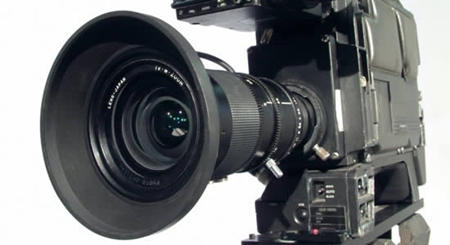As the price of still cameras has come down, so has the price of video cameras, and more and more weekend photographers are venturing into video.
Let us begin with one very important fact. Still photography freezes a moment in time (a still image), while video photography tells a moving picture story, by placing a whole bunch of ‘still images’ one after the other.
The first step towards better videos is to try not to shoot ‘still images’ with a video camera and your videos will start to look professional immediately. Like all aspects of good camera-work, you have to think about the end product before you begin to shoot. For the still photographer it is a case of looking at the background and then working out the best combination of shutter speed and aperture. For the video photographer it is a case of working out the story line first and then how to shoot the various elements in the story.

One of the ways you can pick the first time video user is the fact that the camera operator spends so much time taking shots of still subjects. Having not made the mental adjustment from still photography, many minutes are taken up with video of his wife standing by the front door of the hotel you stayed at in Chiang Mai. That, Mr. cameraman, was a ‘still’ shot. With video, you film your wife checking out at the cashier’s desk, picking up her bags and walking towards the exit. Then you rush outside and the next footage is her coming out of the hotel and hailing a taxi. You have just shot a living ‘story’.
Just as still photographers have photographs in books and magazines to study, the video photographer has a very ready source of informative examples to scrutinize. This is called the television set! Sit down in front of the goggle box and see how the pros do it. Start to look critically at technique. Where was the camera, relative to the subject? Did they ‘zoom’ in or was it one far shot and another close up to follow? How many times did the cameraman actually use the inbuilt zoom? You may be amazed to see how seldom, while the amateurs zoom all the time!
One of the common problems for both the video and the still photographer is low light levels. Filming while the light is too low produces poor and muddy video because the camera has to do all sorts of electronic whizz-bangery to artificially increase the apparent light levels. This function is generally called Automatic Gain Control and while you can continue to shoot, the end result is very disappointing ‘grainy’ video.
Another of the common problems with both types of camera work is ‘camera shake’. For a still shot you get a ‘soft’ and blurred image. For a video shoot you get drunken backgrounds, jumping foregrounds and seasick viewers. Now the still photographer can avoid this problem by the use of both hands and a tripod as well if necessary, and guess what, the video cameraman should do the same. Ever seen a pro video shoot? The camera is mounted on a ‘dolly’, a tripod on wheels and moved around. Ever watched a news video cameraman? He has the camera mounted securely on his shoulder and uses two hands to hold it there. Yet how many times do you see the one handed video approach? Lots!
Focusing. This is a common problem with still cameras with Auto-Focus (AF), and 99 percent of video cameras are AF too. The magic eye in the camera focuses on a spot in the middle of the screen. When you are filming a couple in front of the Wat Arun, if the magic dot is not on one of the people, they will end up out of focus and the Wat perfectly sharp. This is where you may need to use manual over-ride.
Application of these simple aspects of video photography will give you (and those who watch your videos) a much better end product, and a much more satisfying one for yourself to produce.




